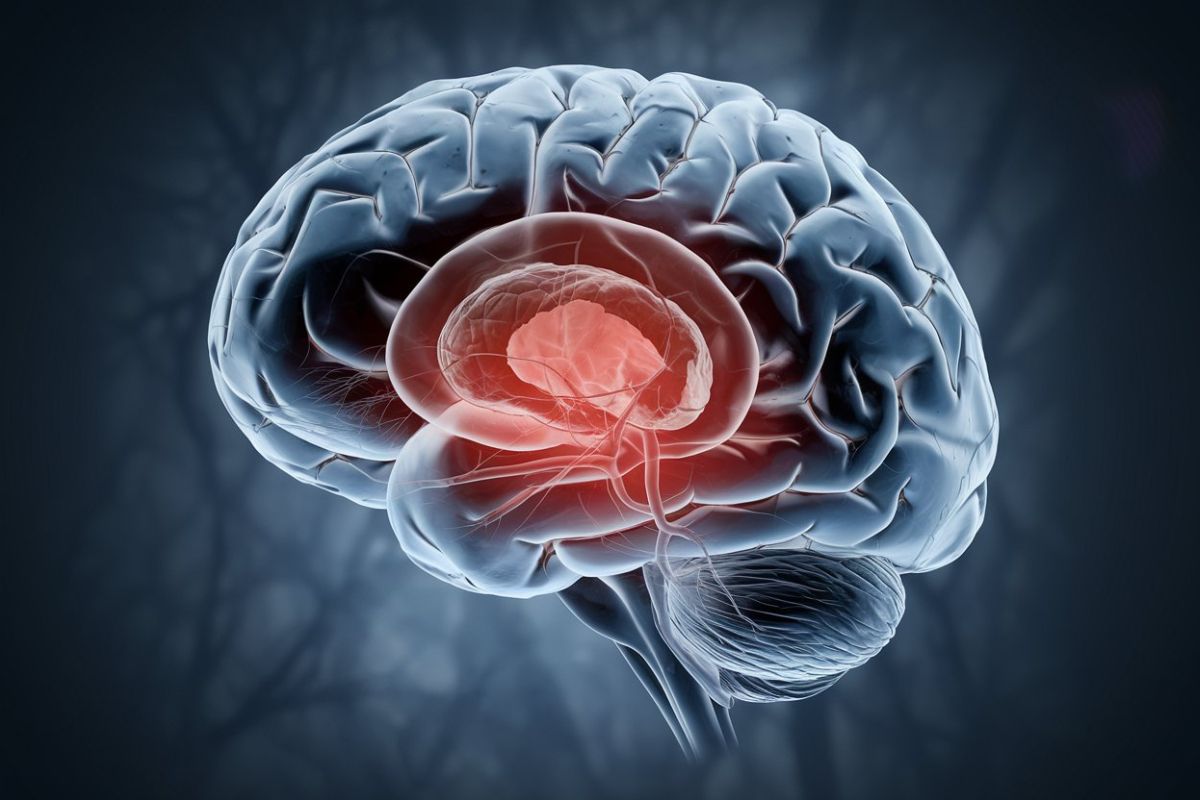
Posterior Cerebral Artery Syndrome is a condition that affects the brain's blood supply, leading to various neurological symptoms. This syndrome occurs when the posterior cerebral artery, which supplies blood to the occipital lobe, thalamus, and parts of the temporal lobe, becomes blocked or narrowed. Symptoms can include visual disturbances, memory problems, and difficulty recognizing objects or faces. Understanding this syndrome is crucial for early diagnosis and effective treatment. In this blog post, we'll explore 30 intriguing facts about Posterior Cerebral Artery Syndrome, shedding light on its causes, symptoms, and potential treatments. Whether you're a student, a healthcare professional, or just curious, these facts will provide valuable insights into this complex condition.
Key Takeaways:
- Posterior Cerebral Artery Syndrome (PCAS) can cause vision loss and memory problems due to blocked blood flow in the brain. Early diagnosis and treatment are crucial for better outcomes.
- Lifestyle changes like controlling blood pressure and avoiding smoking can help prevent PCAS. Ongoing research offers hope for improved treatments and outcomes.
What is Posterior Cerebral Artery Syndrome?
Posterior Cerebral Artery Syndrome (PCAS) is a condition that occurs when the posterior cerebral artery, which supplies blood to the occipital lobe, thalamus, and other parts of the brain, becomes blocked or narrowed. This can lead to various neurological symptoms.
-
PCAS often results from a stroke. When blood flow is interrupted, brain cells in the affected area begin to die.
-
The occipital lobe is primarily affected. This part of the brain is responsible for visual processing.
-
Symptoms can include visual disturbances. Patients may experience partial or complete vision loss in one or both eyes.
Causes of Posterior Cerebral Artery Syndrome
Understanding the causes of PCAS can help in its prevention and management. Various factors can lead to the development of this syndrome.
-
Atherosclerosis is a common cause. This condition involves the buildup of fatty deposits in the arteries, which can restrict blood flow.
-
Embolism can also lead to PCAS. Blood clots or other debris can travel to the posterior cerebral artery and block it.
-
Hypertension increases the risk. High blood pressure can damage blood vessels, making them more susceptible to blockages.
Symptoms of Posterior Cerebral Artery Syndrome
Recognizing the symptoms of PCAS is crucial for early diagnosis and treatment. These symptoms can vary depending on the specific area of the brain affected.
-
Visual field defects are common. Patients may lose vision in specific areas, such as the upper or lower half of their visual field.
-
Cortical blindness can occur. This is a condition where the eyes are normal, but the brain cannot process visual information.
-
Memory problems may arise. Damage to the thalamus can affect short-term memory.
-
Difficulty recognizing faces. Known as prosopagnosia, this symptom occurs when the fusiform gyrus is affected.
Diagnosis of Posterior Cerebral Artery Syndrome
Accurate diagnosis of PCAS involves various medical tests and imaging techniques. Early diagnosis can significantly improve outcomes.
-
MRI scans are commonly used. These scans provide detailed images of the brain and can identify areas of damage.
-
CT scans can also be helpful. They are often used in emergency settings to quickly assess brain injuries.
-
Angiography may be performed. This test involves injecting a dye into the blood vessels to visualize blockages.
Treatment Options for Posterior Cerebral Artery Syndrome
Treatment for PCAS aims to restore blood flow and minimize brain damage. Various medical and surgical options are available.
-
Thrombolytic therapy can dissolve clots. Medications like tPA are used to break down blood clots and restore blood flow.
-
Anticoagulants may be prescribed. These drugs help prevent new clots from forming.
-
Surgery might be necessary. In some cases, procedures like thrombectomy can remove blockages.
Rehabilitation and Recovery
Rehabilitation plays a crucial role in the recovery process for PCAS patients. Various therapies can help regain lost functions.
-
Physical therapy is often required. It helps patients regain strength and coordination.
-
Occupational therapy can be beneficial. This therapy focuses on improving daily living skills.
-
Speech therapy may be needed. If the syndrome affects areas responsible for speech, therapy can help improve communication skills.
Long-term Outlook for PCAS Patients
The long-term outlook for PCAS patients varies depending on the severity of the initial injury and the effectiveness of treatment.
-
Some patients recover fully. With prompt treatment and rehabilitation, many patients regain most of their lost functions.
-
Others may have lasting deficits. Some patients may experience permanent vision loss or cognitive impairments.
-
Regular follow-up is essential. Ongoing medical care can help manage symptoms and prevent complications.
Preventing Posterior Cerebral Artery Syndrome
Prevention strategies can reduce the risk of developing PCAS. Lifestyle changes and medical interventions play a key role.
-
Controlling blood pressure is crucial. Maintaining a healthy blood pressure can reduce the risk of artery blockages.
-
Healthy diet and exercise. A balanced diet and regular physical activity can prevent atherosclerosis.
-
Avoiding smoking. Smoking damages blood vessels and increases the risk of clots.
Research and Future Directions
Ongoing research aims to improve the understanding and treatment of PCAS. Advances in medical science offer hope for better outcomes.
-
New medications are being developed. Researchers are working on drugs that can more effectively dissolve clots.
-
Improved imaging techniques. Advances in MRI and CT technology provide clearer images of brain injuries.
-
Stem cell therapy shows promise. Early studies suggest that stem cells may help repair damaged brain tissue.
Support for PCAS Patients and Families
Support systems are vital for patients and their families. Various resources are available to help cope with the challenges of PCAS.
-
Support groups can be helpful. Connecting with others who have similar experiences can provide emotional support.
-
Counseling services are available. Professional counselors can help patients and families navigate the emotional impact of PCAS.
Final Thoughts on Posterior Cerebral Artery Syndrome
Posterior Cerebral Artery Syndrome (PCAS) affects many people worldwide. Understanding its symptoms, causes, and treatments can help manage this condition better. Key symptoms include visual disturbances, memory issues, and difficulty recognizing objects or faces. Causes often involve blockages or hemorrhages in the posterior cerebral artery. Treatments range from medication to surgery, depending on severity.
Awareness and early diagnosis play crucial roles in managing PCAS. Regular check-ups and being mindful of symptoms can lead to timely intervention. If you or someone you know shows signs of PCAS, seeking medical advice promptly is essential.
Knowledge empowers patients and caregivers alike. By staying informed, you can navigate the challenges of PCAS more effectively. Remember, early action can make a significant difference in outcomes. Stay vigilant, stay informed, and take proactive steps for better health.
Frequently Asked Questions
Was this page helpful?
Our commitment to delivering trustworthy and engaging content is at the heart of what we do. Each fact on our site is contributed by real users like you, bringing a wealth of diverse insights and information. To ensure the highest standards of accuracy and reliability, our dedicated editors meticulously review each submission. This process guarantees that the facts we share are not only fascinating but also credible. Trust in our commitment to quality and authenticity as you explore and learn with us.


